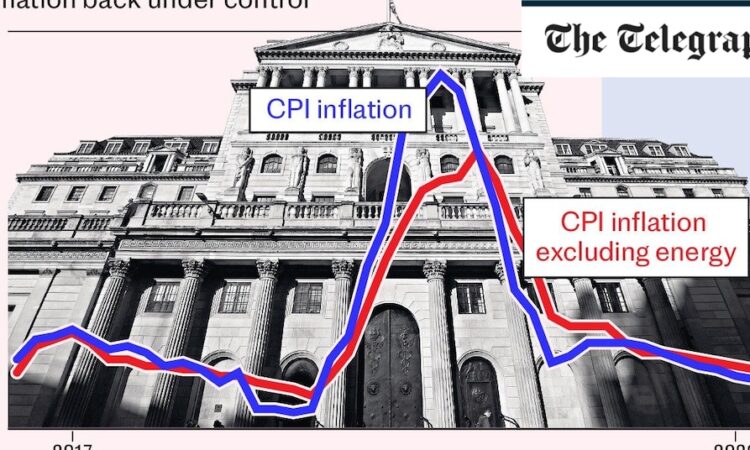
Falling gas and electricity bills are the main driver, with a 12pc drop in the energy price cap that is expected to shave around 1.2 percentage points off the headline rate in April, according to economist Sanjay Raja at Deutsche Bank.
There are also signs food prices are stabilising. The price of some staples like bread and milk are already cheaper than a year ago.
The Bank said “fierce competition” from discount supermarkets like Lidl and Aldi was also likely to temper food inflation to between 2pc and 3pc for the rest of the year.
However, there are signs that price rises in the services sector remain persistent. The Monetary Policy Committee (MPC) noted that services inflation “has declined but remains elevated”.
At an annual rate of 6pc, some members of the MPC have explicitly said they are looking for further falls before they will consider cutting rates.
This is in part because services are so wide-ranging: it covers the price of everything from a haircut to theatre tickets and fixing your car.
Inflation of services is higher than goods because of rapidly rising wages. The Bank expects pay growth to average around 5.5pc this year. However, pay rises for workers in “consumer-facing sectors” were likely to be much higher at 7pc. A near double-digit increase in the minimum wage was “overwhelmingly” cited as the main driver of higher pay.
That said, pay deals in the latter half of the year are likely to be “materially lower” than those seen so far in 2024, suggesting average pay growth is likely to cool further.
In part, this is because unemployment is expected to rise.
So far the jobs market has been remarkably resilient to the steep rise in interest rates. The number of advertised job vacancies has fallen from a peak of just over 1.3 million two years ago to a little over 900,000 now, which is still high by historical standards.
However, the MPC expects the unemployment rate to rise from 3.8pc to 4.8pc over the next two years as higher borrowing costs weigh on activity.






